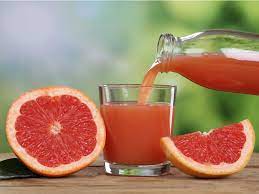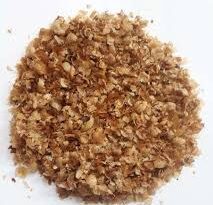Methods of Preparing the Field for Plantain Cultivation
Fields to be used for the plantain farm are to be prepared with minimum disturbance to the soil (no-tillage farming). In consequence, manual clearing should be preferred to mechanical deforestation because bulldozers always remove topsoil with the important organic matter and compact the remaining soil.
The activities involved in preparing the land include clearing the land of bushes, trees, stones, stumps, etc. Land preparation also involves tilling the land and application of manure to improve land fertility (for less fertile land).
In consequence, manual clearing should be preferred to mechanical deforestation because bulldozers always remove topsoil with the important organic matter and compact the remaining soil.
When an old natural fallow is cleared, the debris from the forest should be burned if plantain cultivation is planned for 1 or 2 cycles only. If perennial cultivation is being considered, planting should be done through the mulch. Young fallows of about 3 to 5 years or improved legume fallows should be simply slashed and left without being burned.

Trees must be cut but the stumps are not to be removed, and the trees should be left to grow again. They can be pruned only when they start to obstruct field activities or shade the plantains. Once the fallow crop is slashed, the field is ready for pegging. Drains should be dug if some spots in the field tend to waterlog after heavy rains.
Read Also: Plantain Fertilizer Application and Methods
The site should be easily accessible, especially if the establishment of a large field is being planned. It should be well drained but not too steeply sloped. Plantain cultivation is impossible if the land becomes flooded from time to time, or has a water table at a depth of only 50 cm or less. The soil should be rich in organic matter (black soil). Hence fields in a long natural fallow, under an improved established fallow or with a lot of mulch are recommended.
Recommended Spacing for Plantains and Bananas
The recommended spacing is 3 m between the plantain rows and 2 m within the row (in other words. 3 m x 2 m). An alternative is 2.5 m x 2.5 m. If spaced 3 m x 2 m, 1 hectare should contain 1667 plants, but with a spacing of 2.5 m x 2.5 m, it should contain 1600 plants. Rows should be straight in flat fields to give plants the maximum amount of sunlight. However, on sloping land, rows should follow the contour lines in order to decrease soil erosion.
Meanwhile, it is recommended that a soil test should be taken before land preparation starts so that soil amendments such as gypsum can be broadcast. Better soils will also benefit from adding compost or mulch to improve soil physical, chemical and biological fertility. Correct soil preparation will require deep ripping to break hardpans and allow for improved root penetration. Test for nematodes before planting if there is a history of bananas in that patch.
In Plantain as well as Banana Farming, Soil for banana should have good drainage, adequate fertility, and moisture. Deep, rich loamy soil with pH between 6-7.5 are most preferred for banana cultivation. Ill drained, poorly aerated and nutritionally deficient soils are not suitable for the banana. Saline solid, calcareous soil is not suitable for Banana cultivation. Avoided soil of low lying areas, very sandy & heavy black cotton with ill drainage.
Read Also: 12 Management Tips for better Poultry Performance Potential
A soil that is not too acidic and not too alkaline, rich in organic material with high nitrogen content, adequate phosphorus level and plenty of potash are good for the plantain and banana.
Prior to planting plantain and banana, grow the green manuring crop like daincha, cowpea, etc. and bury it in the soil. The land can be plowed 2-4 times and leveled. Use rotavator or harrow to break the clod and bring the soil to a fine tilth. During soil preparation, a basal dose of farmyard manure (FYM) is added and thoroughly mixed into the soil.
A pit size of 45cm x 45cm x 45cm is normally required. The pits are to be refilled with topsoil mixed with 10 kg of FYM (well decomposed), 250 gm of Neem cake and 20 gm of conbofuron. Prepared pits are left to solar radiation helps in killing the harmful insects, is effective against soil-borne diseases and aids aeration. In saline-alkali soil where PH is above 8 Pit mixture is to be modified to incorporate organic matter.
Plantain and Banana is a large, perennial plant growing around 8 metres tall. Looking somewhat like a tree, it is a herbaceous plant whose top growth dies after flowering, to be replaced by new growth from the rootstock.
Plantains and Bananas are a staple food and one of the most prolific of all food crops, producing more than cassava, and several times as much as wheat and potatoes They are one of the most commonly cultivated food crops in tropical and some subtropical regions of the world. The plant also has a range of medicinal and other uses.
Read Also: Plantain Mulching: Importance and Methods








